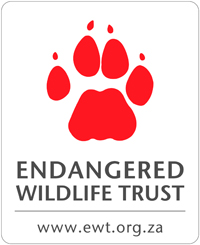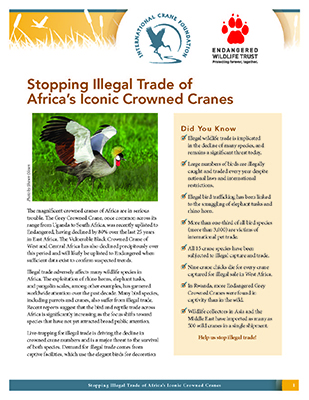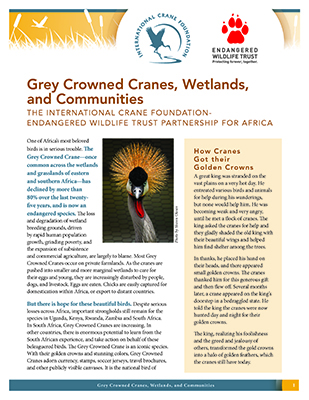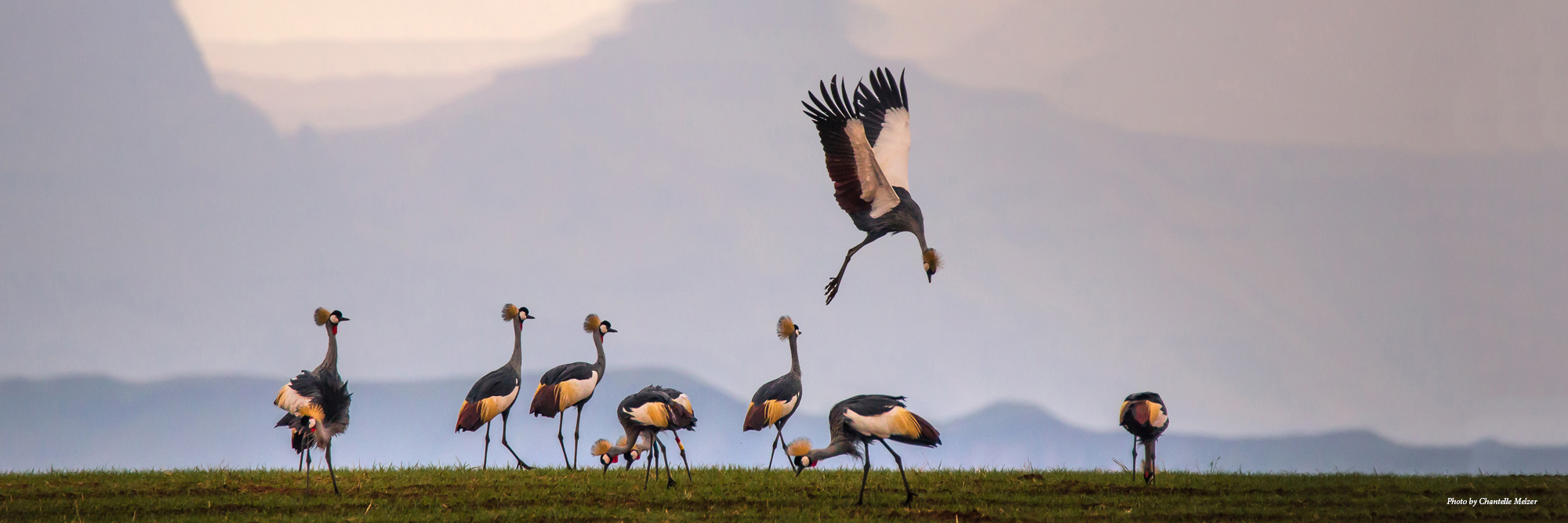
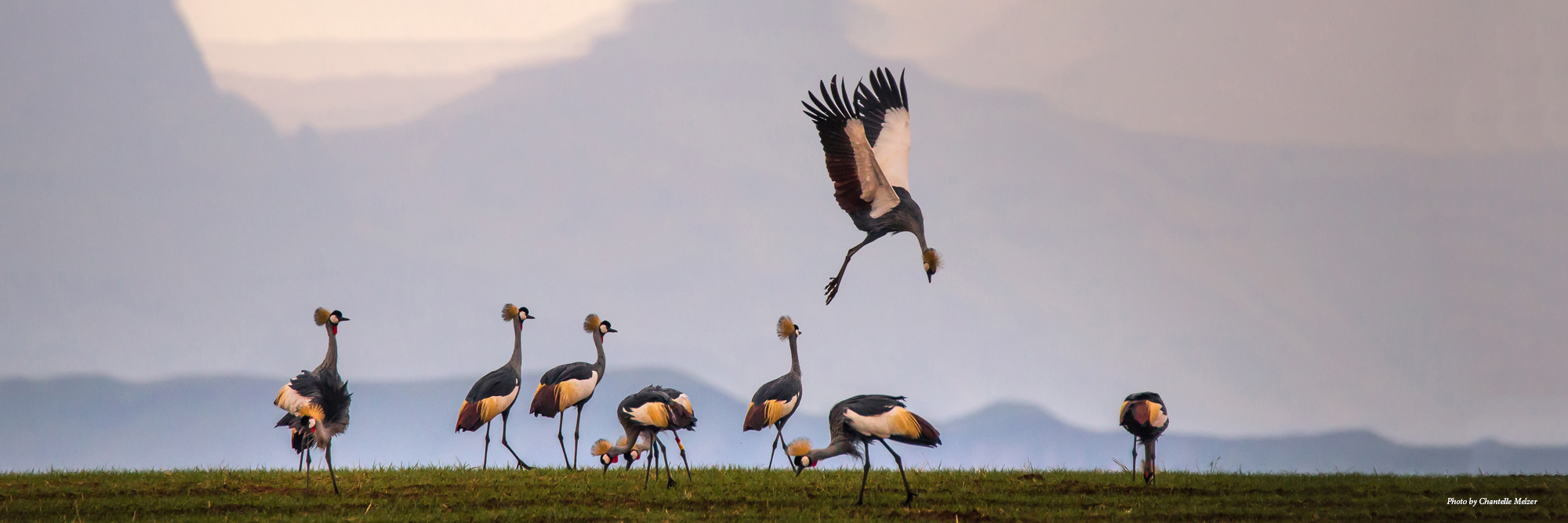
Africa
Issue
The wetlands of Sub-Saharan Africa are home to six of the world’s 15 species of cranes, including resident Grey Crowned, Black Crowned, Wattled and Blue Cranes, and wintering Demoiselle and Eurasian Cranes. These iconic cranes face many threats, fueled by growing demands for land, water, energy and other natural resources throughout Africa.
Solutions
In order to protect the cranes of Sub-Saharan Africa, we must address large-scale threats that will ultimately benefit far more than cranes, including local communities, economies and other species. In close collaboration with our regional partner, the Endangered Wildlife Trust, our work includes:
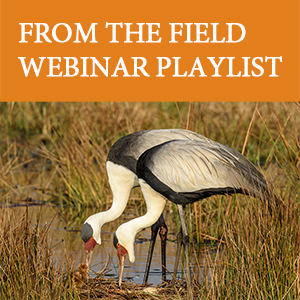
Photo by Daniel Dolpire
View our From the Field Webinar playlist: African Cranes, Wetlands and Communities.
Reducing the impact of global trade on all African crane species. We are:
- Monitoring the supply routes of cranes, from capture to final destinations, in key hotspots for illegal trade in Africa. We are also reducing the need for wild-caught cranes by participating in and supporting global captive management and breeding programs.
- Reducing demand for wild-caught cranes by creating local, national and international awareness of the status of Africa’s resident cranes and the threat that trade poses to wild populations.
- Improving and enforcing policies that govern the trade of cranes and strengthening the consequences of engaging in illegal trade.
Restoring large floodplains that sustain Wattled Cranes in Southern Africa, and isolated populations in Ethiopia and South Africa. We are:
- Ensuring seasonal water cycles in the Zambezi River basin through changes in the operation of existing dams, design and placement of new dams and sustainable water management policies in the headwaters region.
- Implementing management plans and practices to control invasive species, fire and human disturbance in the Kafue Flats, Bangweulu Swamps and Liuwa Plain of Zambia, and the Zambezi Delta of Mozambique.
- Applying monitoring and management practices that quantify the value of improved water management for Wattled Cranes and other target species, people and broader socio-economic interests.
- Integrating river basin management and climate change adaptation in the region.
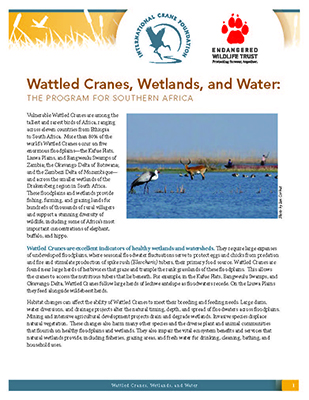
Read more about our Wattled Crane conservation program in Southern Africa.
Engaging communities in the conservation of Grey Crowned Cranes and their wetland habitats across East and Southern Africa. We are:
- Implementing integrated, community-based projects to secure significant breeding sites for the Grey Crowned Cranes in Kenya, Rwanda, South Africa, Tanzania, Uganda, Zambia and Zimbabwe, using regional campaigns to increase pride in the cranes and identifying and training local leaders for crane and wetland conservation.
- Developing a sustainable finance mechanism to support long-term community conservation efforts for key crane sites with tools like carbon trading markets and payment for ecosystem service functions.
- Finding and advocating for ways to reduce the conflict between farmers and Grey Crowned Cranes in agricultural landscapes where substantial crop damage occurs.
Conserving Blue Cranes on agricultural landscapes in South Africa. We are:
- Developing and implementing a conservation plan for Blue Cranes, based on a clear understanding of how cranes use the agricultural systems in the Western Cape and the probable impacts of climate change on land use and agricultural practices.
- Seeking to minimize the impact of mining and other land development on critical Blue Crane breeding and roosting sites.
- Implementing a media and marketing campaign to honor Blue Cranes as the national bird in South Africa, a designation that will drive public engagement in their protection.
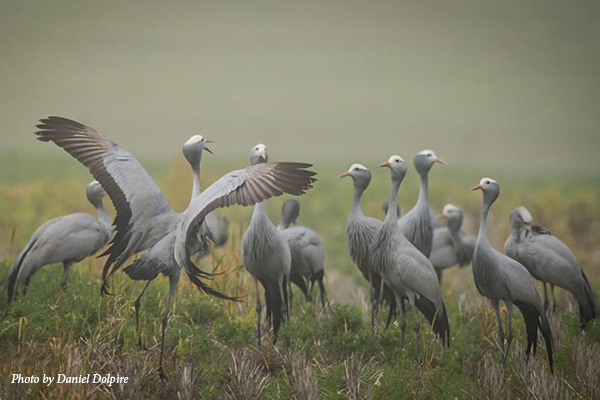
Understanding and managing Black Crowned Cranes on their breeding grounds in West and Central Africa. We are:
- Conducting range-wide status surveys to determine the population and distribution of, and threats to Black Crowned Cranes across West and Central Africa.
- Developing new community-based conservation projects for Black Crowned Cranes, linked to the broader wetland management programs in West and Central Africa.
- Securing Black Crowned Cranes in key wetlands across the agricultural landscapes of Ethiopia.
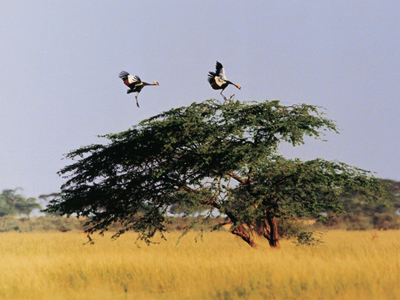
Photo by Crane Wu
Partners
